Can using solar energy be an exercise in "Spontaneous Cooperation"...
A strategy to help heal -- and save -- the world?
A World That Works... for Everyone
by Michael Powers
 Compared
to our ancestors of just a few generations ago, most of us live an
abundant life. Too often, however, we are consumed by how
much we don't have… how much we feel we are lacking.
Compared
to our ancestors of just a few generations ago, most of us live an
abundant life. Too often, however, we are consumed by how
much we don't have… how much we feel we are lacking.As author Lynne Twist puts it in her book, The Soul of Money: "Our first waking thought of the day for many of us is 'I didn't get enough sleep.' The next one is 'I don't have enough time.'
Whether true or not, that thought of not enough occurs to us automatically before we even think to question or examine it. This internal condition of scarcity... lives at the very heart of our jealousies, our greed, our prejudice and our arguments with life..."
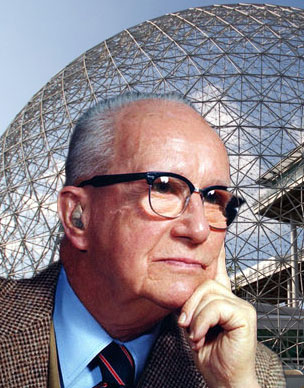 Genius-inventor R. Buckminster Fuller, who created the first geodesic dome (among other things), believed that just the opposite was true -- and he put it this way:
Genius-inventor R. Buckminster Fuller, who created the first geodesic dome (among other things), believed that just the opposite was true -- and he put it this way:"Think of it... We are blessed with technology that would be indescribable to our forefathers.
We have the wherewithal, the know-it-all, to feed everybody, clothe everybody, and give every human on Earth a chance.
We know now what we could never have known before -- that we now have the option for all humanity to "make it" successfully on this planet, in this lifetime."
We have the wherewithal, the know-it-all, to feed everybody, clothe everybody, and give every human on Earth a chance.
We know now what we could never have known before -- that we now have the option for all humanity to "make it" successfully on this planet, in this lifetime."
Faced with the Cold War of the 1960’s and the oil shortages of the 1970’s, Fuller created the “World Game,” which was intended to be the opposite of a “War Game,” because “war games prepare for war, but World Games prepare for Peace.”
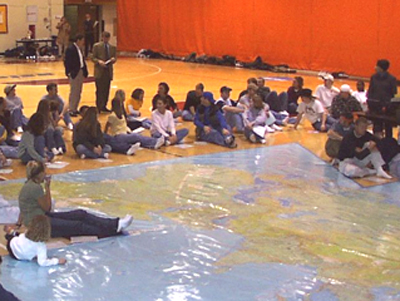 The World Game was a
simulation exercise intended to answer the following big question:
The World Game was a
simulation exercise intended to answer the following big question:- How do we make the world work for 100% of humanity…
- in the shortest possible time…
- through spontaneous cooperation…
- without ecological damage or disadvantage to anyone?”
After playing this World Game literally hundreds of times over many years – on college campuses and in corporate settings – one clear strategy for gaining “spontaneous cooperation” and winning the game began to emerge.
One or more regions would propose connecting their electrical transmission grid with another distant region to allow for increased trade in renewable energy such as solar, wind, hydro power and so on.

- A universal increase in living standards
- A reduction in hunger and poverty
- A stabilized population growth
- An increase in trade, cooperation and peace among nations
 Why
would a global energy grid make such a big difference? It turns out that electricity is the basis for
modern civilization. Without it, populations are literally in the dark
and live out their lives in day-to-day subsistence.
Why
would a global energy grid make such a big difference? It turns out that electricity is the basis for
modern civilization. Without it, populations are literally in the dark
and live out their lives in day-to-day subsistence. But, with access to sufficient and affordable electricity, societies have…
- Clean drinking water and adequate treatment systems
- Refrigeration: stable food supply and medicines
- Reduction of disease and infant mortality
- A higher literacy rate
- Stable economy with steady job growth
The earth receives -- in the form of solar energy -- enough energy IN ONE HOUR to power the entire planet FOR ONE YEAR.
So, it turns out there is no energy supply problem… there is only an energy distribution problem… caused by having not enough energy of the right kind, in the right place, at the right time.
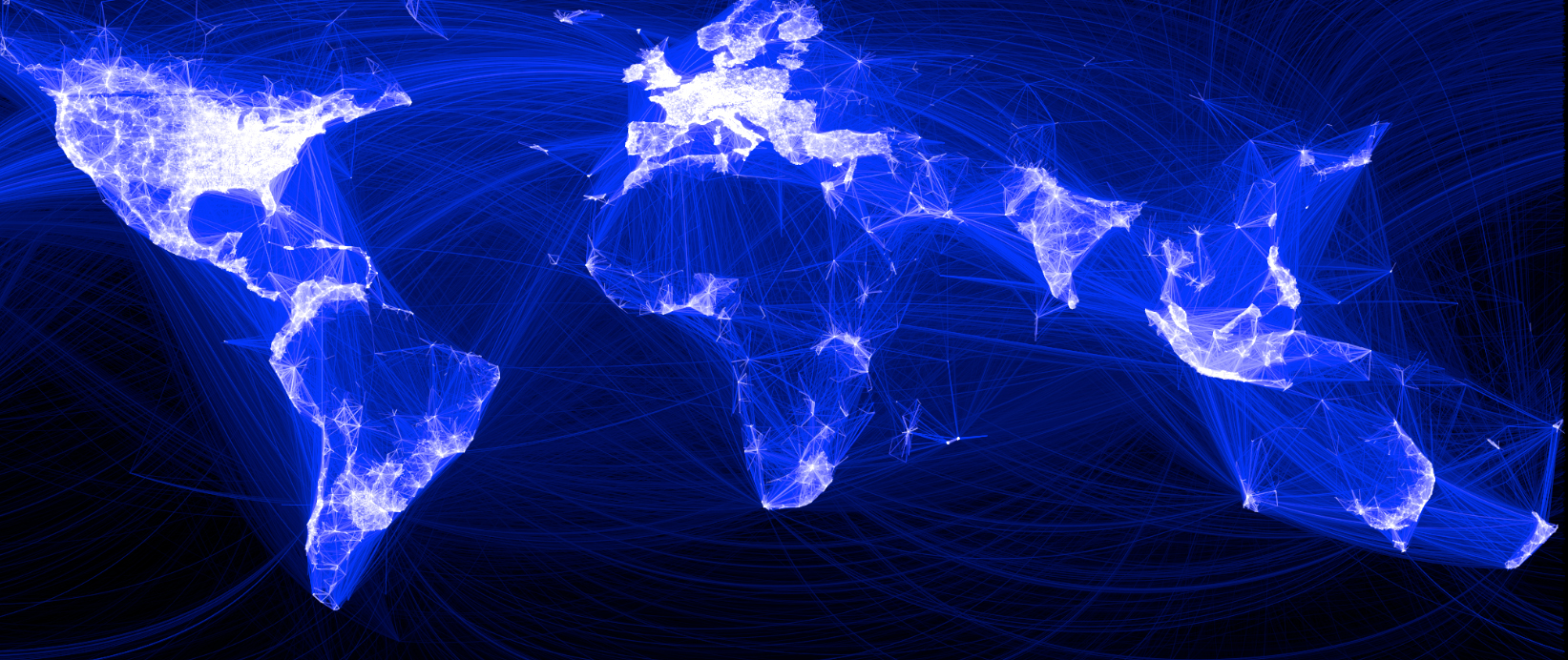
This is where
the World Game’s winning strategy – building a global energy grid or
“internet of energy” – works its magic… by moving power AT THE SPEED OF
LIGHT… from areas where there is too much energy, to areas where there
is too little. As Bucky Fuller put it, “There is no energy crisis,
there is a crisis of ignorance.”
 Fuller’s “world-wide-web of
electricity” is a very big idea… but as Former Alaska Governor Walter
Hickel said in a speech before the United Nations:
Fuller’s “world-wide-web of
electricity” is a very big idea… but as Former Alaska Governor Walter
Hickel said in a speech before the United Nations:“Historically,
the world's most cynical leaders have used war or preparing for war as
an economic strategy. War puts people to work and gives them a purpose.
War concentrates the thoughts of a nation, making it think and act as
one. But why war?...
After all, war is just a big project… Why not a big project (like the) Global Energy Network, linking the industrial and developing worlds with an energy grid… Two billion people live without electricity today.
Show me any area in the world where there is a lack of energy, and I'll show you basic poverty. There is a direct tie-in between energy and poverty, energy and war, energy and peace.”
After all, war is just a big project… Why not a big project (like the) Global Energy Network, linking the industrial and developing worlds with an energy grid… Two billion people live without electricity today.
Show me any area in the world where there is a lack of energy, and I'll show you basic poverty. There is a direct tie-in between energy and poverty, energy and war, energy and peace.”
It may seem odd to introduce technology as a solution into a spiritual essay like this one. But first of all, this is not new technology; in fact, in the mid-1960's it was possible to transmit power over 1,500 miles without significant loss -- and over 4,000 miles today, using high-voltage DC transmission.
And in fact, these are not terribly new ideas: the Global Energy Grid initiative has been endorsed by a large
 number of influential world leaders in the past 25 years, including His Holiness the Dalai Lama, Rev. Desmond Tutu, Vice-President Al Gore and journalist Walter Cronkite,
who called the initiative, "an ingenious project that could help
relieve much of the danger to our civilization posed by the modern four
horsemen of the apocalypse: poverty, pollution, population growth and
proliferation of nuclear weapons."
number of influential world leaders in the past 25 years, including His Holiness the Dalai Lama, Rev. Desmond Tutu, Vice-President Al Gore and journalist Walter Cronkite,
who called the initiative, "an ingenious project that could help
relieve much of the danger to our civilization posed by the modern four
horsemen of the apocalypse: poverty, pollution, population growth and
proliferation of nuclear weapons."When it comes to expert technical support, however, no less an expert than Clark W. Gellings, a Fellow at the Electric Power Research Institute and an IEEE Life Fellow, published an essay in IEEE's Spectrum magazine recently and called for "Building a Global Power Grid," stating, "With a little DC wizardry and a lot of cash, we could swap power across continents" and solve a lot of global problems.
In fact, a recent NOAA study recommended building high-voltage "power superhigways" so that solar and wind power could be used to reduce CO2 emissions and more effectively fight climate change.
And China's State Grid Corp.,one of the world's biggest utility companies, just announced plans to build a "global energy internet," which is expected to attract investment of $50 trillion by 2050 and share renewables from all over the world. A new white paper on this topic was recently published here.
We now even have a market mechanism to keep track of all these energy transactions in real time; it's called "blockchain" and it's being pilot-tested in a Brooklyn neighborhood right now and also in Austrailia. So, there are no technical or financial barriers to these developments.
No, what's really needed is a new consciousness: a willingness to move past our fanatical demands for independence... and embrace a new spirit of inter-dependence -- which is also a more accurate description of our present reality.
Our desperate need to cooperate applies as much to fighting climate change or terrorism as it does for creating new prosperity: our collective responsibiliy is to be good stewards of the planet... to “Think Globally and Act Locally.”
And since we have been focusing on the global level up to this point, let’s zoom down to the local level to what that would look like, in practice.
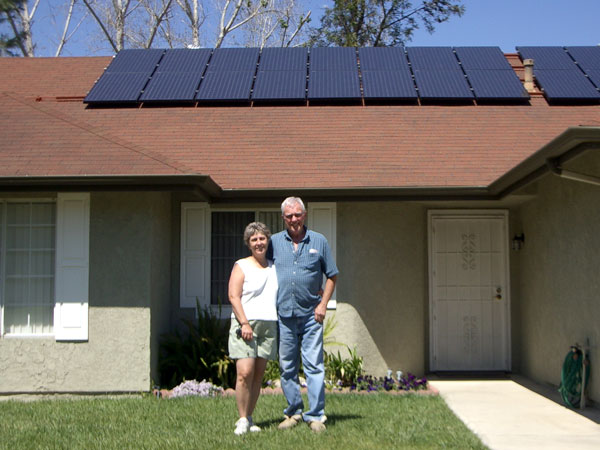 These
days, many of us and our neighbors are in the process of installing
new solar energy systems on their rooftops, on their homes or businesses… systems
which will provide for most (if not all) of the power they need and
also lower their power bills for quite some time.
These
days, many of us and our neighbors are in the process of installing
new solar energy systems on their rooftops, on their homes or businesses… systems
which will provide for most (if not all) of the power they need and
also lower their power bills for quite some time.Economically and environmentally, this is wonderful; but perhaps there is an even more important dimension to this undertaking: the spiritual dimension.
Everyone knows the gospel story of the Loaves & Fishes... Jesus feeds the multitudes with only a few loaves of bread and some fishes.
Some see this story as proof that Jesus worked miracles but others see the story as an important parable about how the universe actually works. One interpretation of the story of the Loaves and the Fishes is that Jesus created a place where abundance could occur, through sharing and cooperation. And when that happened, there was suddenly more than enough for all.
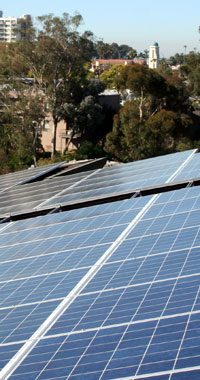
The solar energy systems we are putting on our homes also create a place were abundance can occur, just like the story of Loaves and Fishes.
In the daytime, solar panels produce more power than we need and so we send the extra back to the utility for credit (and they, in turn, send it to the business community).
At night, we need more power than we can make, so we take back from the grid the power we need. Sometimes we are feeding the grid and sometimes the grid is feeding us.
For now, the solar energy system helps to lower the power bills, allowing us to invest our resources for other important purposes. But someday in the future, we may be actively capturing kilowatts for export to China, India or Africa.
After all, solar electricity moves at the speed of light – which means it can actually encircle the planet seven and a half times in a second -- so distance is no problem as long as the right connections are in place!
Remember that earlier statistic? The earth receives -- in the form of solar energy -- enough energy IN ONE HOUR to power the entire planet FOR ONE YEAR. That is a factor of almost 10,000 to one or, put another way: Every hour, the earth receives 10,000 times more energy than we use.
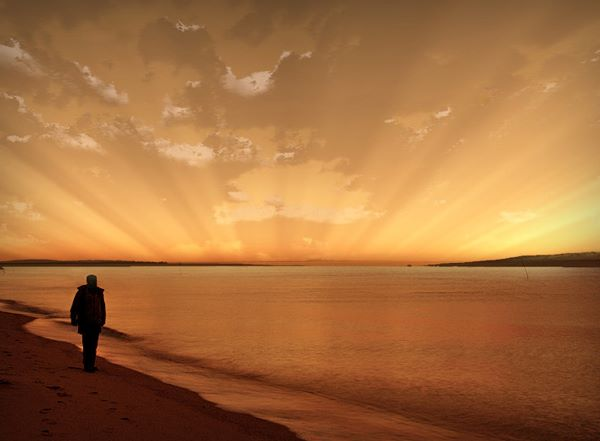 That is the definition of abundance: more than enough.
That is the definition of abundance: more than enough. As it says in the poem by Hafiz…
Even after all this time,
The sun never says to the earth:
You owe me.
Look what happens with a love like that,
It lights the whole sky.
The sun never says to the earth:
You owe me.
Look what happens with a love like that,
It lights the whole sky.